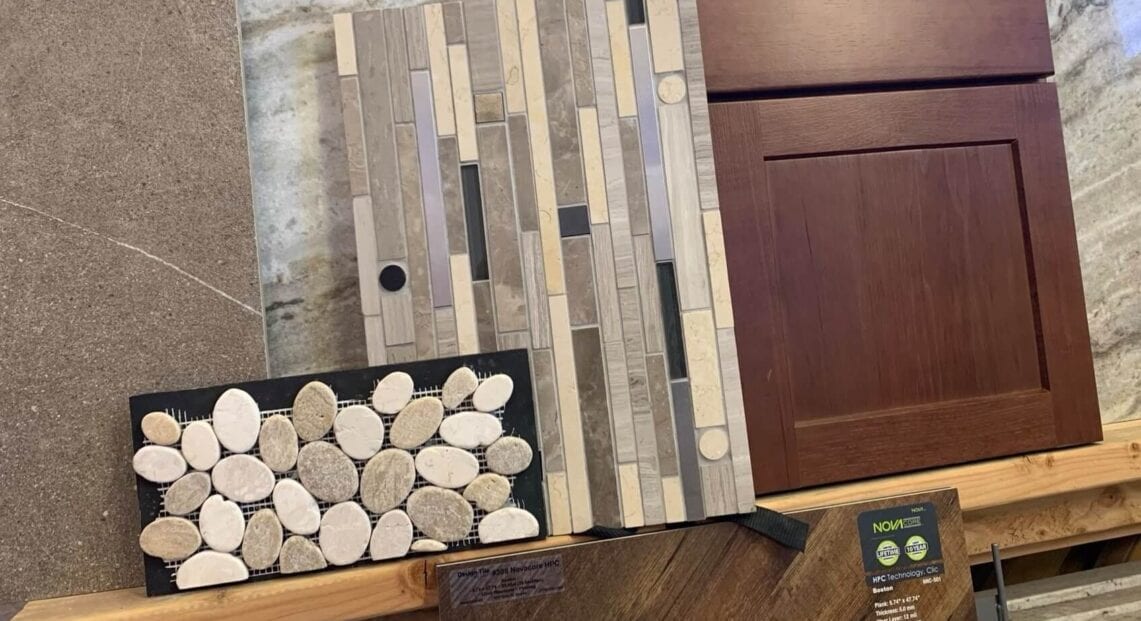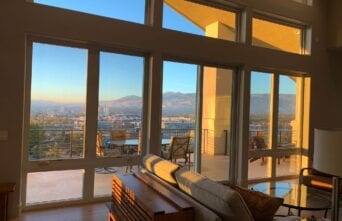Putting Your Material Design Together

Now that you’ve gotten organized and educated, you can start sorting through your ideas for putting your design together. Start sifting through all of your photos and samples you’ve gathered and see if you find a pattern. Are most of the photos of kitchens one style or color of wood? Do most of the bathrooms show a more linear design, square tub or sinks, or do you see rounder shapes? Does one color scheme stand out more than others? These are all clues about the style that you are really attracted to. You might like a particular style in a magazine when you see it and have some photos in that style, but in my experience, majority rules here. Your collection of photos speaks to your comfort zone. However; don’t lose sight of your furniture style and the style of your home’s exterior or interior architecture.
If you’ve gotten this self-help homework done, you’re ready to go to work, building the design. Using a Design-Build General Contractor, the design service should be part of your contract.
Design-Build Contractor:
The Design-Build Contractor receives discounts from material suppliers in your area. With a Cost-Plus contract, you should be receiving contractor’s cost on all of your materials, or understand clearly why not. Those discounts make buying from local suppliers a cost effective smart idea. Your local vendors will assist with any issues that develop with their product. Many will even work with customers that are introduced through contractors when they are unhappy with a product. The material supplier and the contractor have a relationship that is valuable to the store and worth of customer service time to preserve. If a problem develops with a plumbing or electrical fixture that was purchased locally, the supplier will most often order a new product from the manufacturer without needing to return the defective one first. That can mean not having to do without until the new product arrives. It can mean limiting your plumbing or electrical contractor to one trip; take out and put in. In some cases, a trip charge that can cost more than the defective part! Can you see now why those deals on the internet might look less and less attractive to you?
Design Only Professional:

Without a Design-Build Contractor, you might be considering a licensed Design Professional. It’s a difficult decision. A lot of money will be invested into your project materials. It doesn’t take more than a couple of mistakes before the Design Professional isn’t looking that expensive. On the other hand, we all have friends who have done a beautiful job with their finished design without paying for assistance. Designers, like Contractors, receive discounts from their material suppliers. In the case of finish construction design materials, I receive up to 35% on some materials. By passing on that discount to their customers, the fees become much more cost-effective. If a Designer isn’t offering their discounts, consider asking when discussing their fee. If their fee is substantial AND they are receiving the discounts; that’s double dipping!
When to bring your Design Professional in to help?
Day 1 is the short answer. If you’re really going to get your money’s worth, you’ll want to consider window coverings and furniture placement before finalizing the design to ensure you have the proper space. This won’t require a lot of hours, but will save money and aggravation down the road. A good Design Professional will work with you as an adviser to introduce you to their library of experience and education. They will help you through the dozens of decisions; from drywall texture and woodwork or trim, as well as finished fabrics, etc, if you desire that help as well.
Going it alone:
If you are unable to use a design professional due to budget constraints or determination to learn about construction and interior design, but have never done anything quite like this before, there are as many How-To design blogs for design as there are for laying tile, or painting, or other skills developed by craftsmen. However; I do have some advice for you.
Don’t pick anything until you have decided on everything!
If you’ve been following my posts, you’ve seen this before, but I can’t say it enough. Gather up decently large samples for your box. Order and pay for bigger samples, if need be. Colors change as they get larger. Color changes with a change in texture. Color changes when reflecting off of other colors in the room. NEVER select a color from a magazine without ordering a sample and putting it in your mix. NEVER select paint from the little squares. Buy quarts and brush them on a poster board size sheet that you can move to your samples or against cabinets. NEVER paint paint on a wall next to other colors. It changes with the reflected colors. And again, start thinking about all your materials as one big outfit. You’ll want to gather all of your tile, flooring, wood samples from cabinets, lighting metals (if available), paint, and look at them all together.
If you’ve been following me, feel free to let me know what topics you want to know more about. As always, I am happy to hear your comments or questions.


